When most people think of Vikings, images of seafaring raiders and plunderers immediately come to mind.
However, Viking society was a complex one that thrived during difficult times and in somewhat harsh conditions.
Through the archaeological record and historical writings, a detailed picture of the everyday lives of Vikings comes into focus, including how they dressed and what they wore.
Available resources and social class heavily influenced the Viking dress code and was functional by necessity.
Contrary to popular belief, Viking men and women did not dress solely in drab grays and browns.
They had many colors to choose from and were not strangers to medieval high fashion.
The articles of clothing worn by the men and women of Norse society reflected the conditions of everyday life in the uppermost reaches of Northern Europe during the Middle Ages.
For the ordinary Viking, the function was more important than form when it came to the clothes they wore.
And the clothes worn by the Viking farmers were the same as those worn by Viking hunters, homesteaders, and warriors.
Are you curious about what the Vikings looked like? See What Did the Vikings Look Like? to learn what scientists believe about their faces, hairstyles, clothing, skin color, and more.
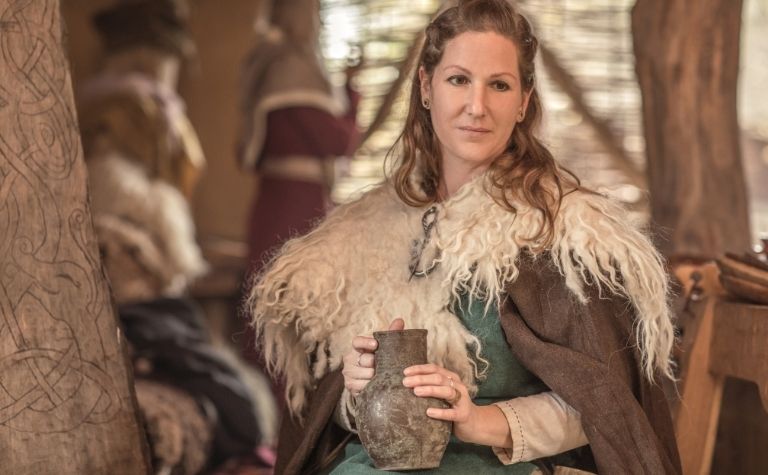
Viking Dress – The Essential Clothing for men and women
Except for Viking nobility and wealthy landowners, ordinary Norse citizens had to make their clothing or barter for them.
As far as materials, the options were few and limited to whatever resources were available and affordable.
This usually meant fabric made from wool or flax, and accessories were made from animal skins and hides. (Also see 10 Famous Vikings from History)
Throughout much of what is now Scandinavia (consisting primarily of Sweden, Norway, and Denmark), cold, snowy winters are the norm, with temperatures hovering near freezing for weeks at a time and dropping even lower further inland from the coastal areas. [1]
Thus, the primary function of Viking clothing for most of the year was warmth and protection from the elements.
Clothing worn by the Vikings was needed to keep them warm and dry.
Natural resources like beeswax and fish oil kept fabrics and animal skins supple and waterproof.
How the Vikings wore their hair had cultural significance. See Did Vikings Wear Dreadlocks? to learn more.
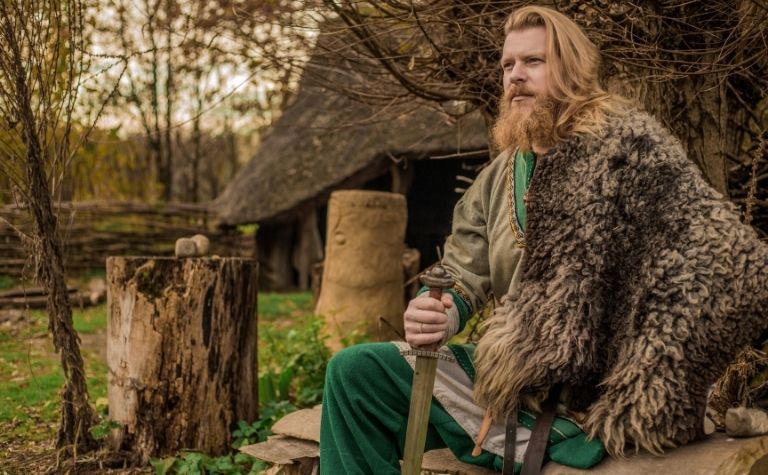
What kind of clothes did Viking men wear?
Although fierce Viking warriors come to mind when considering the clothing worn by male citizens in Norse society, the reality is that most Viking men spent their days farming, raising livestock, and hunting and fishing for sustenance to feed their families. (Also see Did the Vikings Have Long Hair?)
Therefore, clothing needed to be warm, pliable, and water-resistant (or at least quick-drying). [2]
As such, the durability of their clothing was just as important as comfort and functionality.
Back-breaking work like plowing fields, chopping wood, and tending to livestock would have quickly dirtied and worn out delicate clothing articles.
During the colder months of the year, a Viking farmer could expect to be pelted by freezing rain or battered by bitter, cold winds, and there would likely have been snow on the ground.
Ragnar Lodbrok is one of the most famous Vikings, but there are a lot of misunderstandings about him. See Ragnar Lodbrok: Separating Fact from Fiction to learn more.
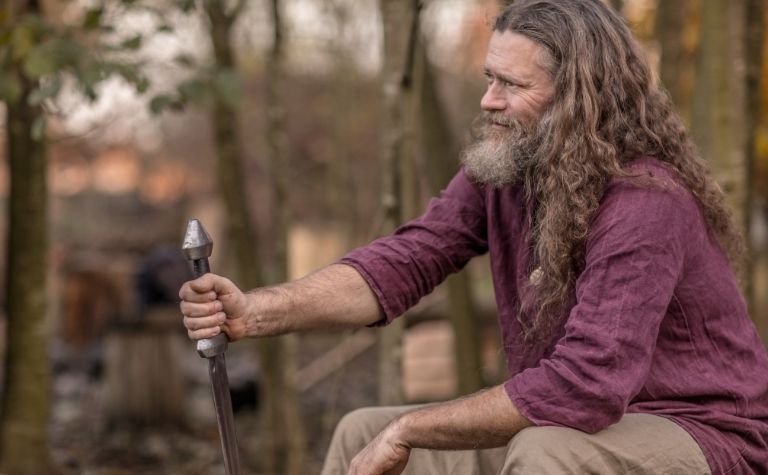
A Viking man’s wardrobe consisted of several important components:
- Tunics – Tunics were simple sleeved garments that typically stretched from one’s shoulders to the knees; they were a staple worn by practically all Norse men during the Viking Age. Tunics were dyed with whatever natural coloring agents were available (typically plants), and more elaborate tunics may have featured embroidery along the edges.
- Trousers – Viking men wore button-less trousers held up by a belt, or in the case of peasants, by simple string or cord. Trousers were likely made from wool to be worn in the winter or linen to be worn during the year’s warmer months.
- Cloaks – Another indispensable article of clothing for Viking men was a cloak that would have been draped around the shoulders, held together with a brooch, and hung down past the knees. Aside from providing warmth and protection from the elements, a cloak would have concealed a Viking male’s weapons.
- Undergarments – Viking male undergarments likely consisted simply of plain trousers or even tunics. For those who could afford them, linen undergarments would have been far more comfortable than those made from wool.
- Leg coverings – Another important article of clothing, particularly for Viking men who spent a significant amount of time outdoors, was leg coverings. These were usually simple strips of fabric wrapped around the calves, from the knees down to the feet.
- Belts – Aside from holding up their trousers, Viking men relied on belts to holster their axes, knives, and in the case of warriors, their swords.
Contrary to popular belief, the Vikings did have splashes of color in their wardrobes.
One of the most highly sought colors was red, which required the madder root.
Madder root was nowhere to be found in Scandinavia and had to be imported (and therefore was very costly). Other colors for clothing included black, yellow, blue, purple, brown, and white. [3]
Did you know there is more to Viking culture than raids and Norse Mythology? They also valued family, farmed land, and played games. See Did the Vikings Play Chess? to learn more.

What Viking Women Wore
Viking women lived more difficult lives than their male counterparts in many ways.
They were expected to cook, clean, and care for children and tasked with working the fields, tending to livestock, and gathering food while the men were away hunting or at war.
The clothing that Norse women wore is reflective of their largely laborious and sometimes tedious lifestyle.
These are the articles of clothing that Viking women wore daily:
- Strap dresses (harness dresses) – Viking women wore a simple garment known as a strap or harness dress, which had a strap over each shoulder and extended down to the ankles. Norse strap dresses were made from coarse fabrics and may have been dyed in various colors. Sometimes they were embellished with brooches to attach the shoulder straps.
- Smocks and undergarments – Smocks worn by Viking women were worn under their strap dresses and served as undergarments.
- Cloaks – Like their male counterparts, Viking women wore cloaks over their shoulders to provide warmth and shield them from harsh weather conditions. Well-to-do Viking women may have had fur and animal skin accents, stitching, or embroidery to spruce up their cloaks.
- Belts – Viking women also wore belts and hung small leather satchels from them to hold essential household items like sewing needles and pieces of iron for creating sparks to start fires. [4]
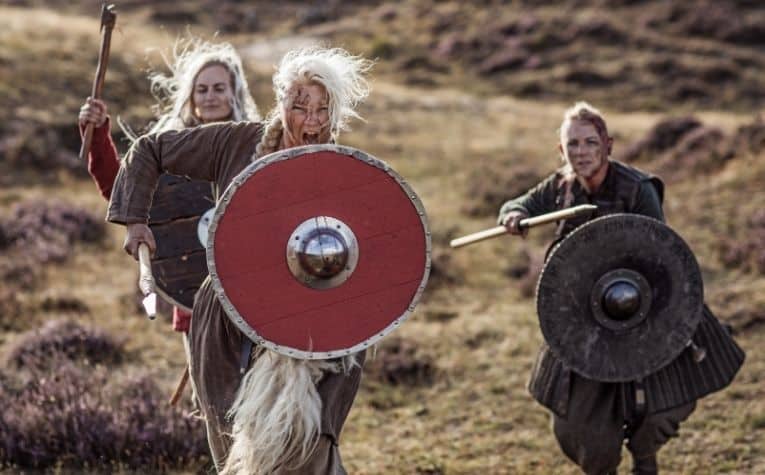
Viking Footwear
Both Viking men and women wore footwear made from leather that came up to their ankles, but boots were also worn.
Typically, footwear was stitched by hand using a method known as the “turnshoe,” where the article was sewn inside-out and then turned out to be worn.
Given the challenging and physical nature of the Viking lifestyle, their footwear usually did not last more than a couple of months. [5]
The Vikings were religious people. Many followed Norse Mythology before they collectively converted to Christianity. See Norse Mythology vs Christianity to learn more.
The Vikings Made Their Clothing
Except for the Norse society’s wealthy and powerful members, the Vikings made their clothing using readily available resources.
More often than not, this meant that wool and flax were the primary materials from which tunics, trousers, dresses, and cloaks were made. (Also see What Did the Vikings Eat?)
Here are some of the materials that the Vikings used to make their clothes:
- Wool – Sheep throughout Scandinavia were predominantly white, so the wool they produced was also white. At that time, shears were not in widespread use, so the Vikings tore the wool off the sheep by hand (incredibly, this is not painful to the sheep) and combed it thoroughly to remove impurities and create long, soft fibers.
The wool fibers were then spun into yarn, which was then woven into the fabric using a loom.
This was a labor-intensive process that required an enormous amount of time and energy to produce basic articles of clothing like trousers and strap dresses.
- Flax and other plants – Flax was a plentiful resource in Scandinavia during the Viking age and was processed into yarn, which would then be woven into various clothing types. Because it was softer than wool, linen was the preferred material for undergarments and clothes for warmer months of the year.
However, producing linen yarn was a laborious process that involved drying, soaking, and then stripping the stalks to yield fibers, which were then repeatedly combed before spinning into threads for weaving.
As such, clothing made from linen was more specialty items (e.g., undergarments) than outerwear for everyday use. [6]
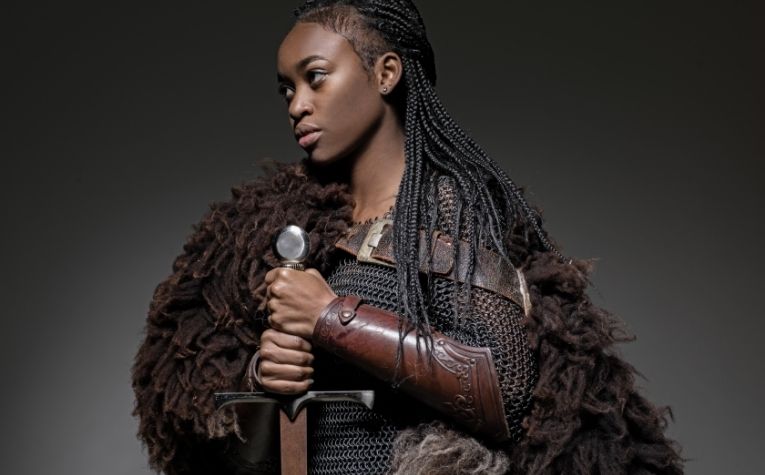
Conclusion
One need look no further than the clothes worn by the ordinary citizens of Norse society to see that they were earnest, hardworking people. (Also see What Weapons Did the Vikings Use? The Top 5)
References:
[1] Source
[2] Source
[3] Source
[4] Source
[5] Source
[6] Source
